A Pair of Blue Jeans Is Best Associated With Which Cultural Subsystem
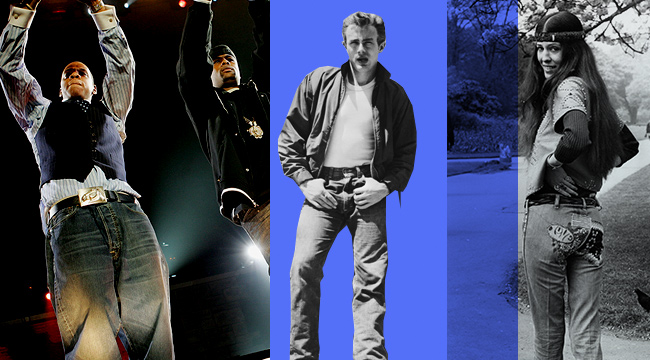
Fashion is mysterious, as a rule. Why are blue jeans a classic? You just hit on something that happens to be timeless and right.
-Diane von Furstenberg
There's something mystical about blue jeans. This one item — a pair of pants made of indigo-dyed, cotton fabric — can be dowdy and wholesome (see SNL's "Mom Jeans") or the symbol of revolution. They are embraced equally by fashion models and kids skating on the street. As culture changes and subcultures spring up, jeans have a way of changing with us, morphing into whatever we need at the moment. They're simply one of the most versatile pieces of clothing ever created.
More than just "clothes," blue jeans have been central to virtually every youth subculture over the last 70 or 80 years. We may not immediately see the connection between the beat generation of the 50's and the golden age of hip hop in the early 1990's, but we can instantly recognize that both scenes embraced jeans as a part of their signature style.
For those who stand in opposition to society's strictures, fashion choices become symbols of rebellion. John Lydon, the lead singer of the Sex Pistols, once said, "If there's not a rebellious youth culture, there's no culture at all." And rebellious youth across the ages have adopted blue jeans as a sign of their resistance, independence, and self-expression.
They take the jean and make it their own. Just as their parents and their grandparents did before them,
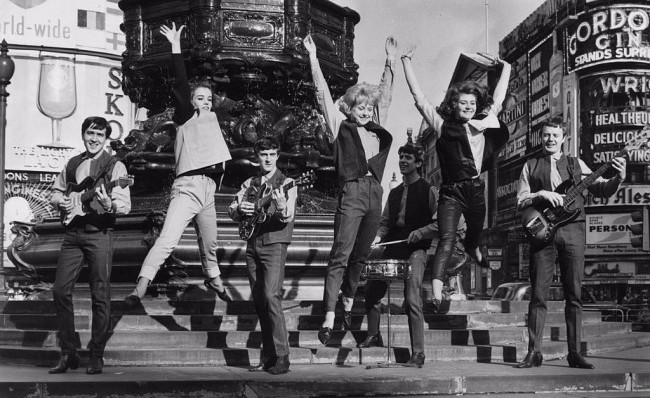
"What's so special about denim is that it can become anything to anybody," Amy Leverton, author of the book Denim Dudes, explains. Leverton is a blue jean expert, having worked in the industry as a designer, denim journalist, and now, as a denim forecaster.
"When jeans were first being worn, it was just workwear," she continues. "In the 50s, the James Dean era, it started being seen as a kind of rebellious fashion item. They'd blend with a personal character — that's the key to denim's success."
* * *
Whether they're straight legged or bell bottomed, skinny or baggy, sharp or distressed, it seems like behind every movement or subculture, there's a pair of blue jeans. They've come to represent freedom in many forms. Freedom from restrictive gender stereotypes, freedom from oppressive governments, freedom from the rules and expectations of the older generations, and (a bit ironically) freedom from consumerism.
We (briefly) tried to track the changes in this iconic outerwear as they were adopted by various subcultures. Not that we could touch on all of them — there are simply too many iterations and movements of blue jeans. And just like any good pair of jeans, the love affair between denim and youth subculture shows every sign of lasting well into the future.
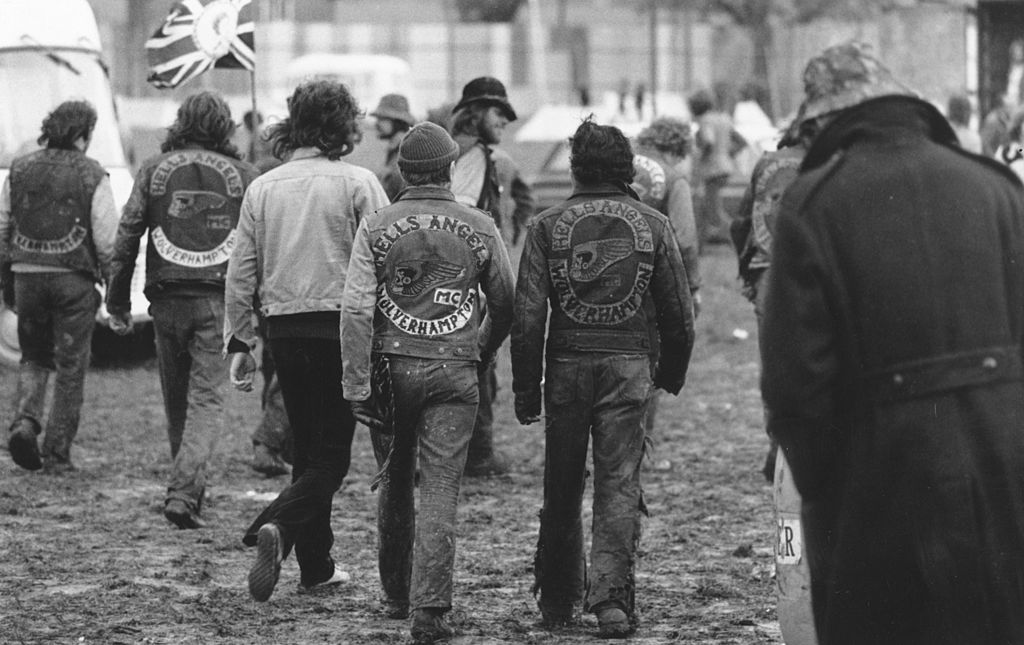
The 'greasers' and beatniks of the 1950s
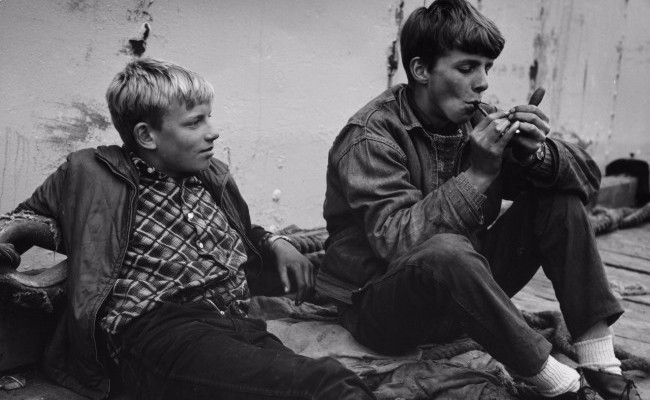
Before the 1950s, jeans were worn mostly as workwear. Then movies like The Wild One and Rebel Without a Cause came along and turned denim into a symbol of Kerouac's mad ones, part of a cultural uniform that represented taking a stand against the puritanism that dominated the 1950s. The second great war was over and the Great Depression had faded from memory. Manufacturing boomed and with that came prosperity.
Families settled down in the suburbs with white picket fences and perfectly manicured lawns. But in many ways, these outward signs of comfort were a smoke screen. Racism, classism, and sexism ran rampant. The youth felt disaffected with their elders. With no great war to define their generation, they were defined by pushing back on expectations. In short, rebellion.
At the same time, the 50's brought an unparalleled amount of free time to young people. In past generations, teens were expected to become full time workers or marry when they came of age. But in the 50's, that timeline shifted, as more and more teens pursued higher education. The mix of searching for a post World War II identity and having more time to hang out and talk about big ideas, led teens to gravitate towards new music like rock and roll and to stars like James Dean. These icons became the cultivars of cool.
The new subculture of rebellious teens sported clothing like their idols: fitted blue jeans, rolled up white tees, and jean or leather jackets. Denim became the casual wear of youth who wanted to prove that they didn't care about expectations. Workwear was tweaked to become symbols of individuality. Dean and Brando represented a counterculture that felt thrilling to teens and dangerous to many older Americans. Instead of following the prescribed life of moving to the suburbs, a whole generation seemed to be smoking cigarettes and riding motorcycles.
"They freaked out the establishment in the United States because they were not conforming and they were wearing jeans," Lynn Downey archivist and historian at Levi Strauss & Co. told BBC in an interview. "If you were a 15-year-old boy in 1953 you wanted to be Marlon Brando."
Suddenly, all over the county, "bad" boys and girls were wearing denim and that frightened their elders. Many schools even banned denim from the premises. This didn't stop teens from wearing jeans, but it was a pretty good way to cement them into youth culture forever.
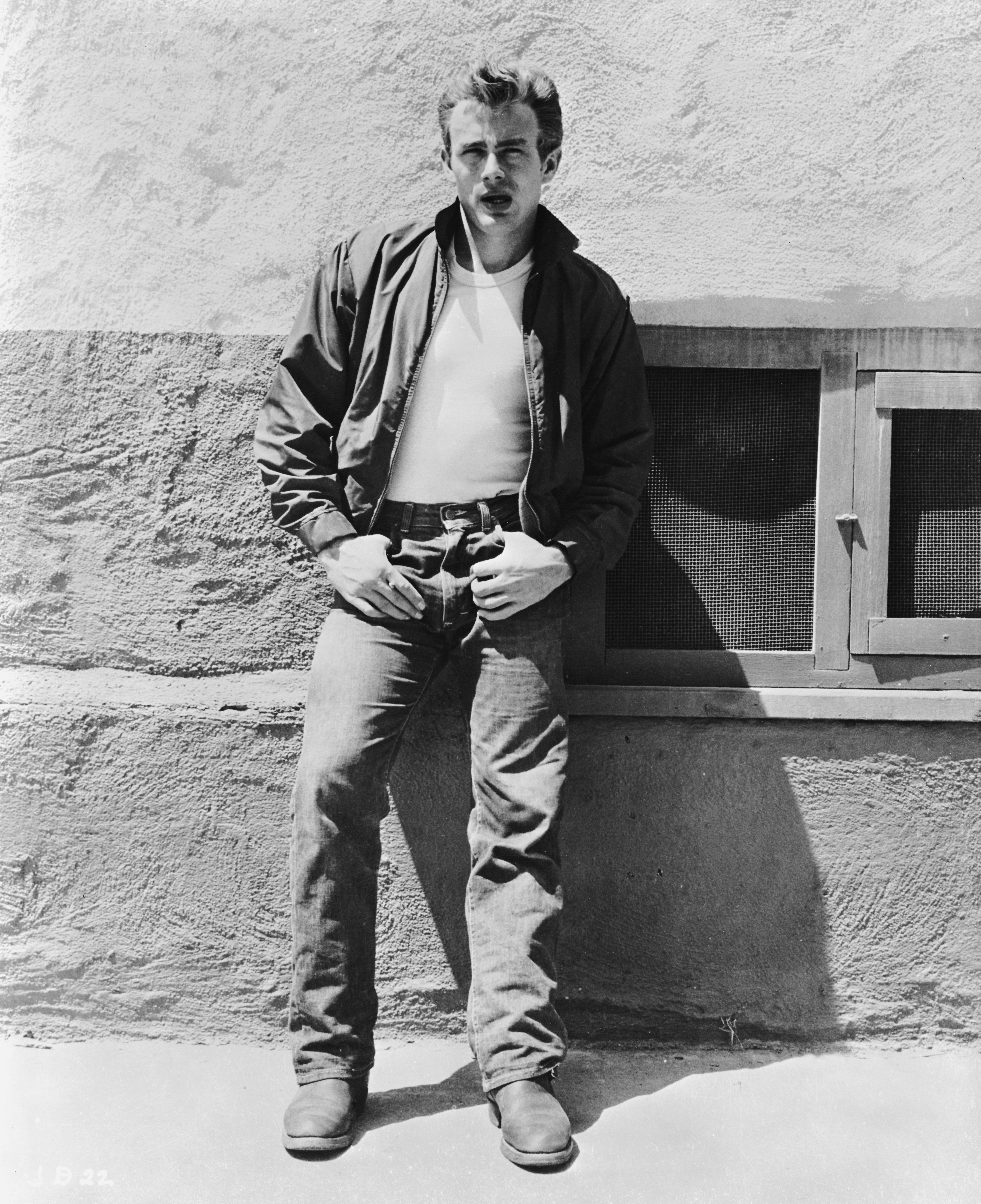
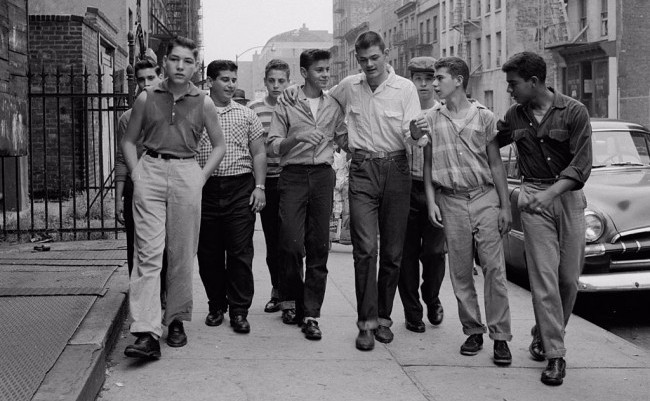
The hippies of the 1960s
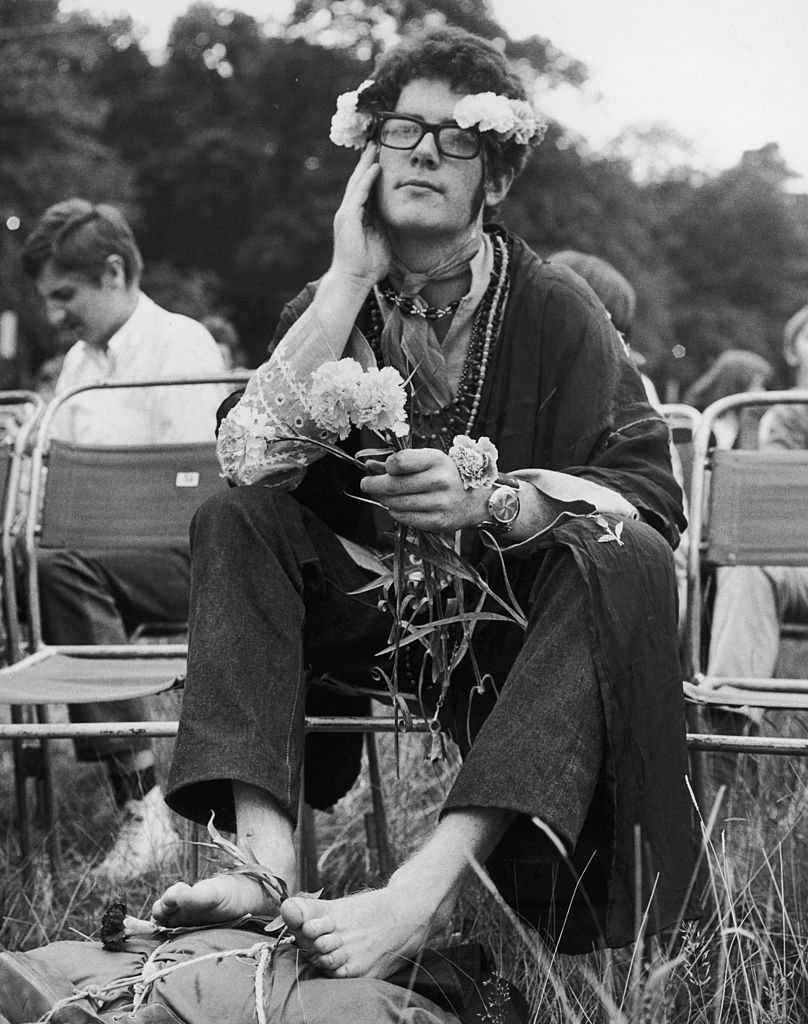
Thanks to the baby boom following World War II, over a third of the population in 1960 was under 18. The youth ruled, and though they'd grown up in a society that was mostly prosperous, they were disillusioned by societal rules and expectations. Young people were sick of inequality — particularly when it came to issues of race and gender — spawning a generation of new music, new freedoms, new ideas, and new clothing styles.
The idealist hippie counterculture was filled with hope for a new world and their dress code reflected that. There was an explosion in the 60's of bright, colorful fabrics, wild new patterns, and twists on the old classics. Jeans loosened and waistlines lowered. Hippies also began to sport colors and embroidered patches to represent the freewheeling lifestyle of their wearers.
Blue jeans weren't just a fashion choice in the 60's, they represented the shift towards a rejection of class inequality. They were the working man's garment, now being embraced by all who sought to strike down such societal divisions. It was also a time of women's liberation and sexual freedom. Blue jeans, which were worn by both genders, represented a step towards equality. Women wore pants regularly now, and everyone was starting to show a whole lot more skin. The hippie generation rejected the consumerism they felt was a hallmark of the 50's and their clothing reflected this. Clothes became more costume — youth thrifted for finds instead of buying new, crocheted their shirts, and repaired/altered items like jeans to fit their aesthetic.
When you think of blue jeans in the 60's you see youth in colorful bell bottoms smoking pot on the grass during music festivals, Jimi Hendrix rocking out on stage in a pair of classic jeans, and protesters in denim and fringed leather jackets hoisting signs to rally against the Vietnam war. Jeans were a hallmark of the 60's, and proof that the trend of subcultures embracing denim wasn't going away. Jeans were becoming mainstream in ways Levi Strauss never could have forseen.
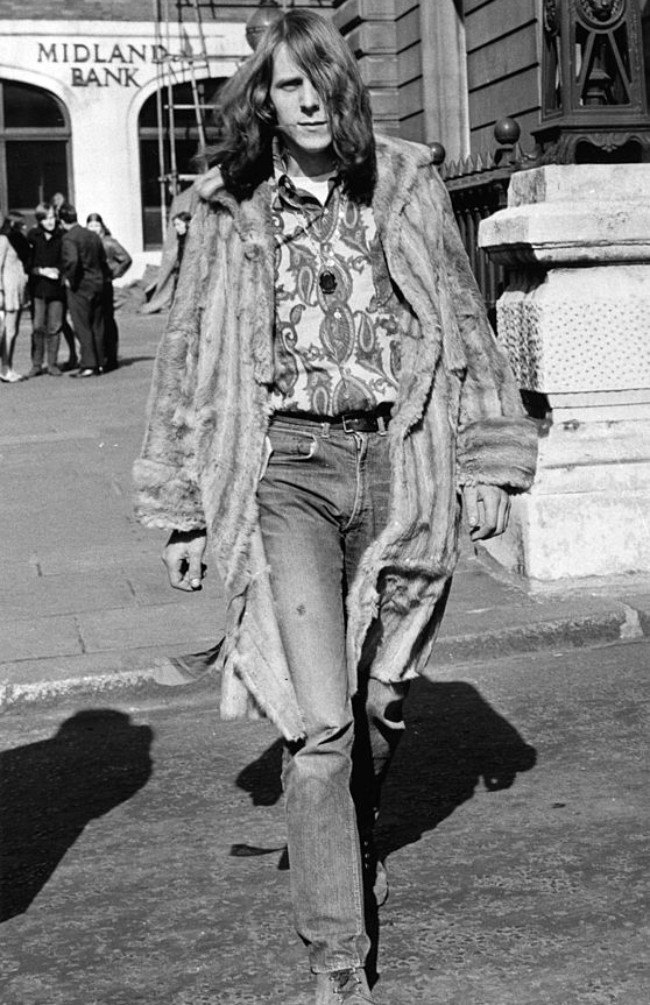
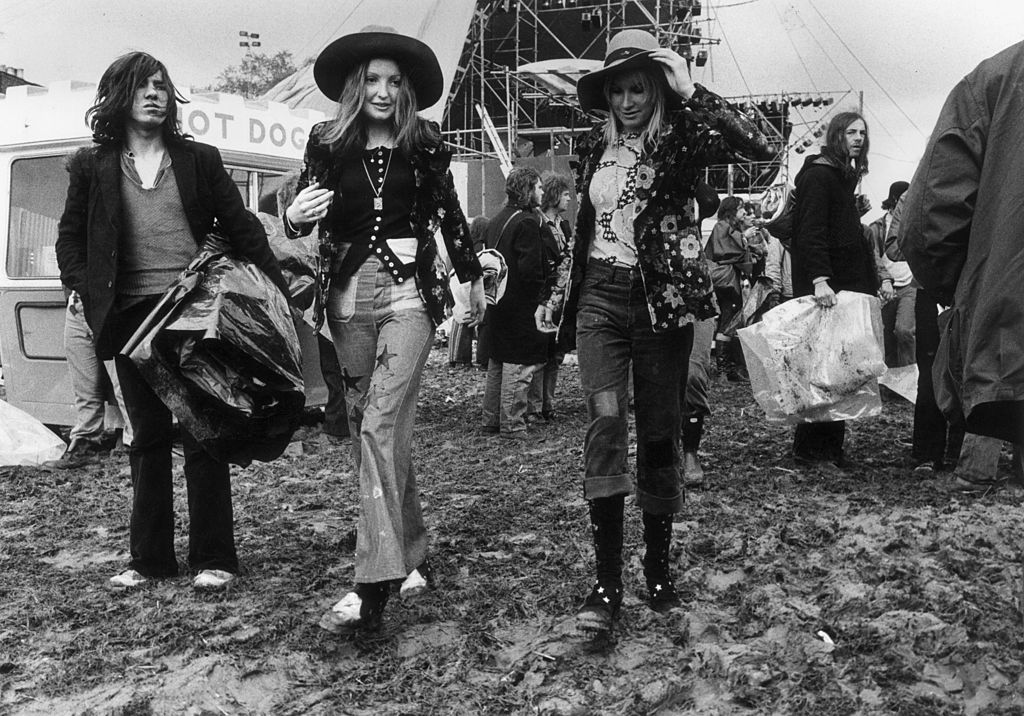
Punk Rock of the 1970s
If Hippie fashion was about love, happiness, and coming together for change, then Punk was about just the opposite. Anarchy.
Clothes became tighter, darker, and angrier. The music was tighter too, and was infused with dissatisfaction. Black leather, safety pins, and band tees were in, and for the first time ever, the jeans were at their most stylish torn and distressed. There was a sense of destruction in the Punk era that translated directly into the clothing. Society was messed up, and it needed to be torn down to start over. And if societal conventions were to be torn apart and deconstructed, so too were the clothes. Punk legends like The Sex Pistols and The Ramones were anti-fashion and anti-establishment, and they led youth towards a new way of thinking, feeling, and dressing.
There was a sense in punk that the music of the 60's had become "endless solos that went nowhere," drummer Tommy Ramone said. "By 1973, I knew that what was needed was some pure, stripped down, no bullshit rock 'n' roll." Clothing needed to be stipped down, and it was. Punk jeans like punk music weren't just "anti-establishment," they were "fuck the establishment."
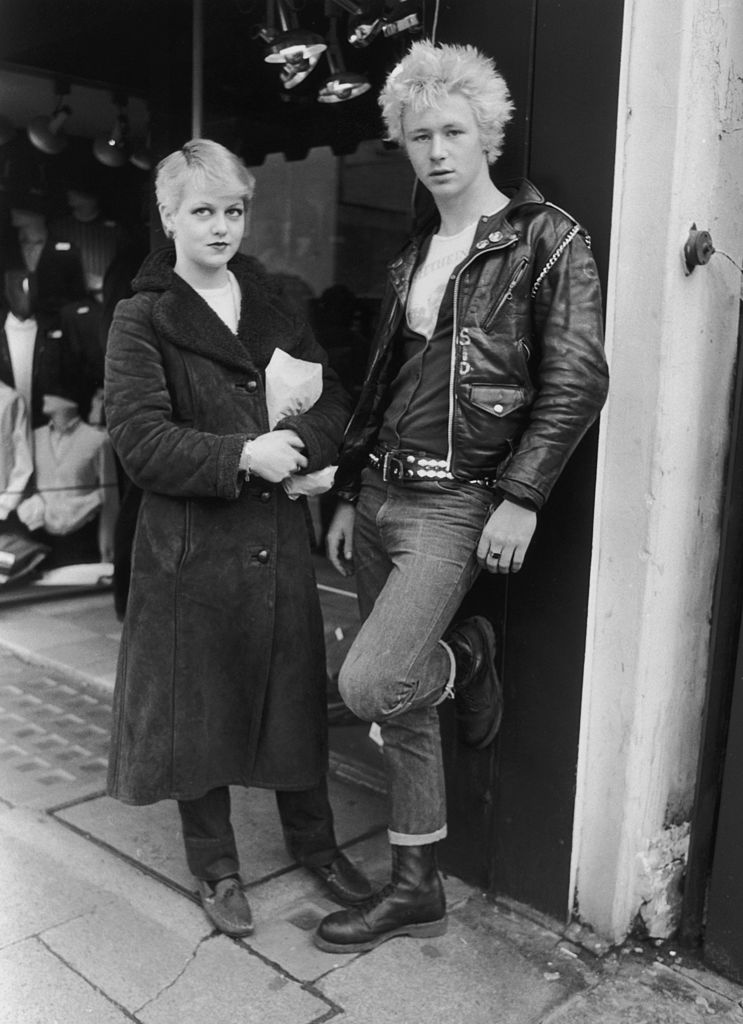
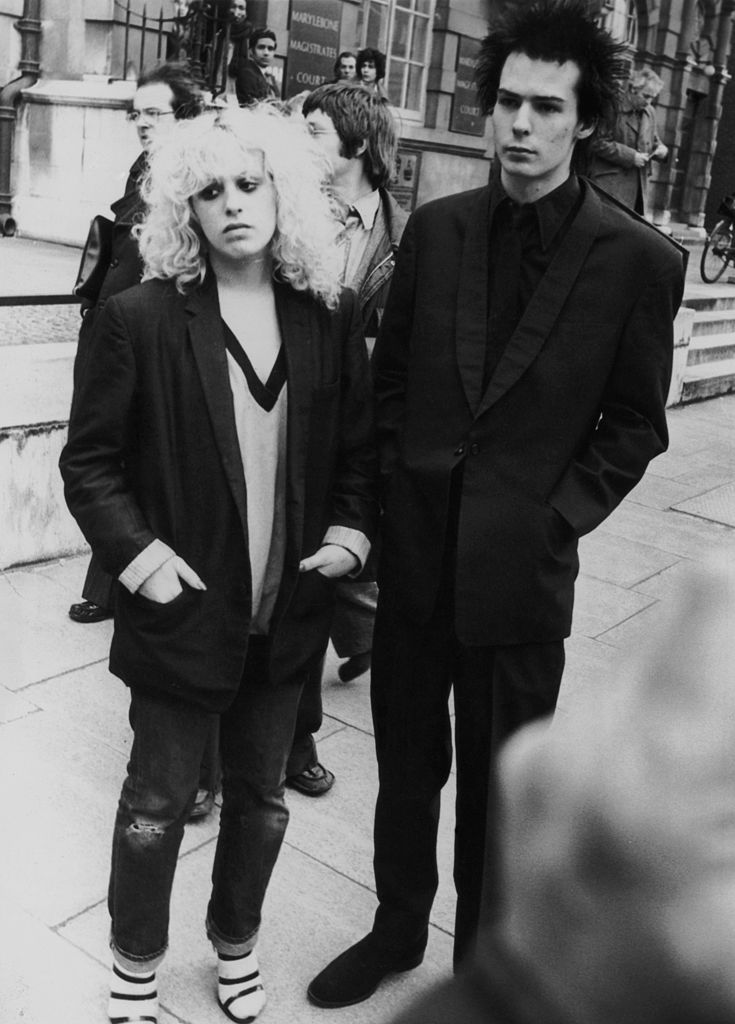
Grunge of the late 1980s and early 90s
They say punk was anti-fashion, but grunge? That was non-fashion. Coming out of two decades of heavy political movements in counterculture, Grunge was driven more by a lack of feeling for the politics of the time (and a deep disenchantment with the consumerism around them) than a particular moment in history. Clothing in the grunge culture came from a distrust of brands and 'stylish' fashion. So clothes became looser, dirtier, and more beat up. Teens showed their disinterest in the megamalls of the early 80s by wearing their rattiest tees and most faded jeans (the megamalls responded by marketing those items).
In a time when everything was speeding up, Wall Street was king, and society seemed driven by greed, youth were searching for a deeper connection to music and the people around them.
"The duty of youth," Nirvana frontman Kurt Cobain said, "is to challenge corruption." These teens felt frustrated with the corruption of society, but too isolated to make a real difference. In grunge music and fashion, they found the solace and passion they were yearning for. The voices of bands like Soundgarden, Pearl Jam, and Nirvana spoke to the disenfranchisement that dominated subculture in the late 80s and early 90s.
The fashion of grunge came out of the Seattle look of the time. Flannel shirts (practical for the damp weather) that could be tied around the waist when the sun came out, old thrifted t-shirts, combat style boots and slightly oversized ripped and faded jeans were the new uniform. Jeans were chosen for their affordability, comfort, and utility rather than their trendiness. The worse off they looked, the better. They didn't call it 'grunge' for nothing.
Hip Hop of the Mid 1990s
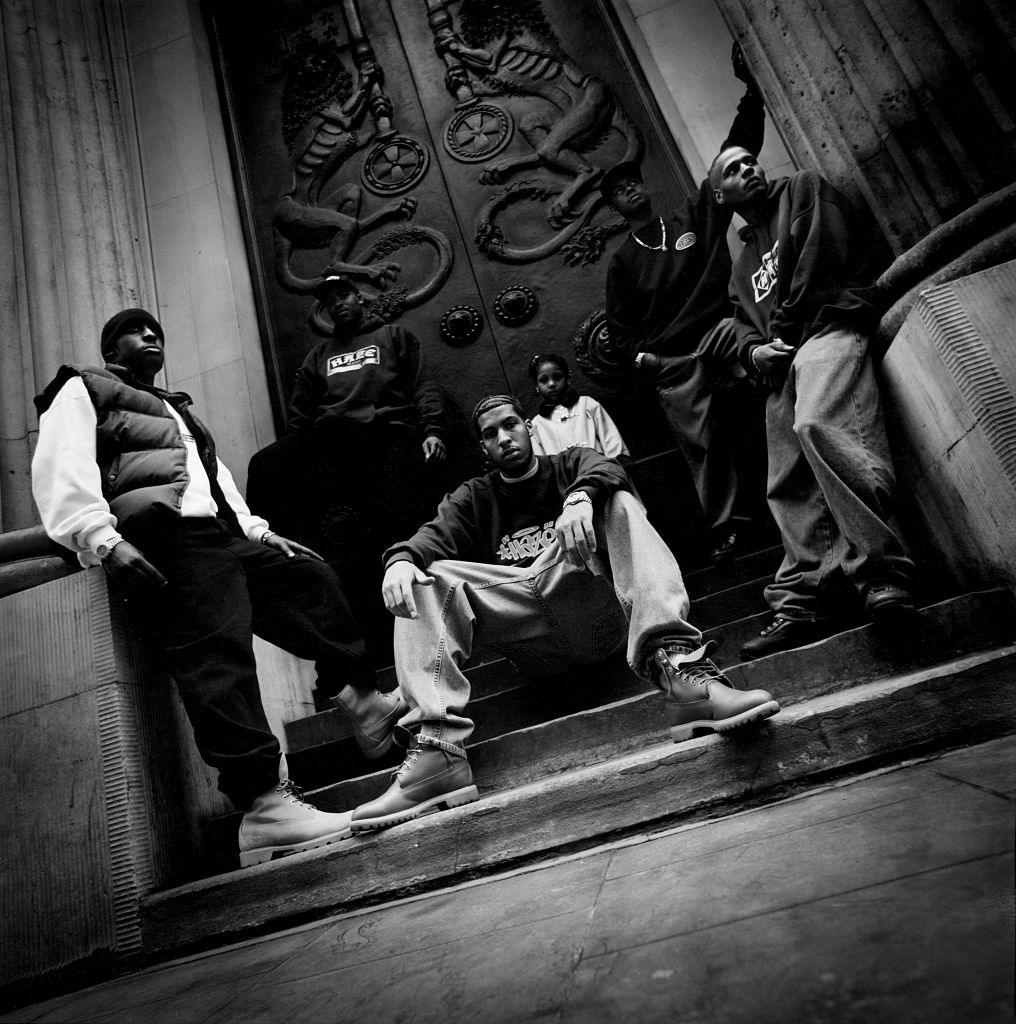
In many ways, hip hop fashion came out of disenfranchised black youth carving a space out for themselves. Fashion wasn't reflecting them in general society, and as the hip hop music genre gained footing, a new style emerged on the forefront. The look included stylish sneakers, oversized t-shirts, and wide legged jeans made to hang low. Don't let their baggy-ness fool you, though: These jeans were not the ripped, faded look of previous generations. Hip hop style is clean, sharp, and impeccably chosen.
Hip hop culture was inspired by the streets and neighborhoods hip hop artists and rappers came from, and the style was unique in that its origins were artists wearing what came from their neighborhoods, versions of what they might have worn regardless of fame and fortune.
"Hip-hop was one of the first music genres that was born of the common people," designer, Frank the Butcher told Highsnobiety. "With any other genre of music there was potentially a costume or some sort of uniform that separated the entertainer from the average person. Hip-hop was the genre of music where it was accepted, promoted, and preferred that the artist looked like the fan."
This style was also unique in its opposition to the strong anti-fashion stance that preceded it. Hip hop culture of the 90s embraced labels as a sign of status, a sign that you were moving up in the world. Artists wore luxury brands as a sign of upward mobility and wealth, but also, in an attempt to challenge and make claim over brands that refused to market to minorites. Soon new brands (often helmed by rappers and artists themselves) sprung up to cater to this underserved fashion community. Eventually, older brands began to wake up to the consumer who was actually buying their products.
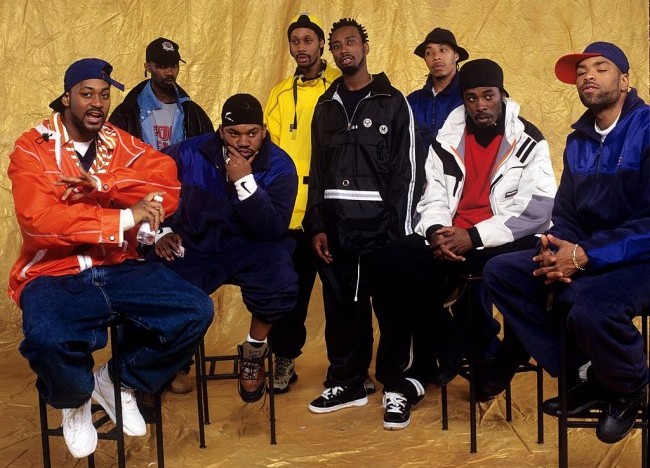
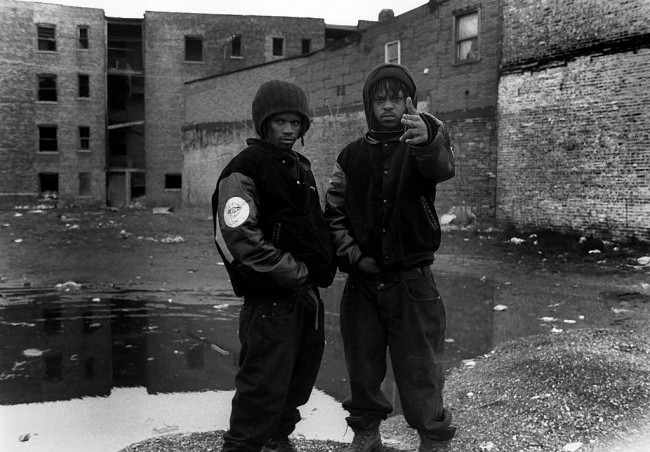
Whatever this was in the 2000s
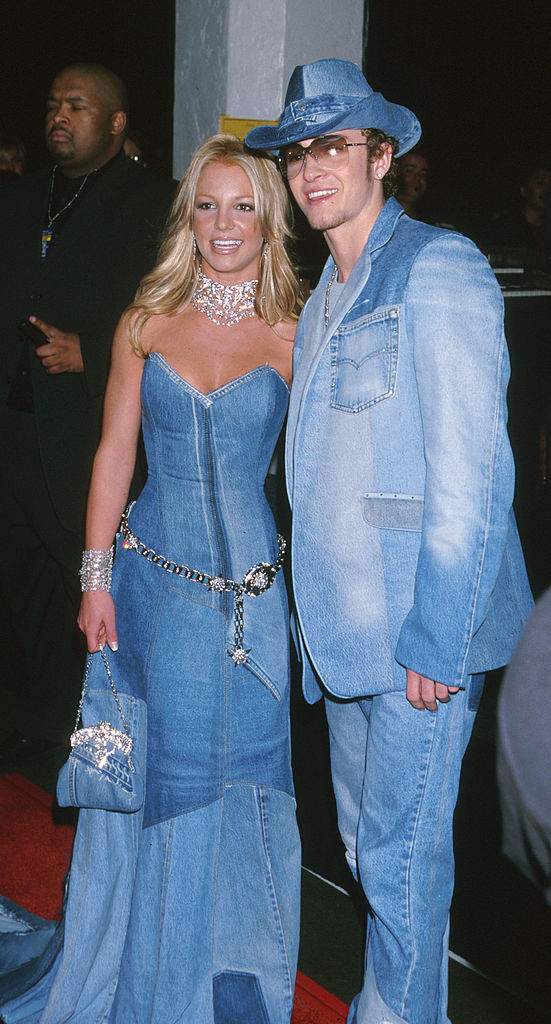
Just kidding this isn't counterculture. To 'counter' replies there was any culture to begin with and (with all respect to Ms. Spears and Mr. Timberlake) this…..had none of that.
In all seriousness, (in terms of counterculture) the early 2000's saw skateboarding fashion claim their own version of denim, and, with the emo/indie subculture, we saw the explosion of skinny jeans. This also cosigned a deeper societal acceptance of homosexuality and a willingness to play with gender roles.
"It was such a big deal for guys to go from the more 90s straight leg stone-washed look to slimming down so much that it was literally talking about jegging for guys," Amy Leverton says of the skinny trend. "It was so extreme."
Of course, whether you even count skinny jeans as coming out of a subculture is debatable since they became so, so mainstream. But that's the thing about jeans and subculture, they almost inevitably go mainstream in time. Just ask that picture of yourself wearing head to toe Hot Topic from a few years back.
As to what's next for jeans and youth, Leverton says we're seeing a real shift to heritage jeans which came out of the subculture of youth who were disenfranchised by the market collapse earlier in the decade. They wanted to return to a better quality, more practical style. As for the next subculture to pop up? That's hard to say. Though it seems likely that the political turmoil of the past two years will result in seismic shifts in youth culture.
One thing is certain though, we'll continue to reshape and repurpose jeans to fit whatever ideals youth culture demands. Jeans were cool in the 1950s and they remain cool today. Your kids and your kid's kids will have their own riffs. The notion of style filtered through denim may be a little worn, but just like our favorite pair of jeans, it's often when things are worn that we like them best.
Source: https://uproxx.com/style/blue-jeans-history/
0 Response to "A Pair of Blue Jeans Is Best Associated With Which Cultural Subsystem"
Post a Comment